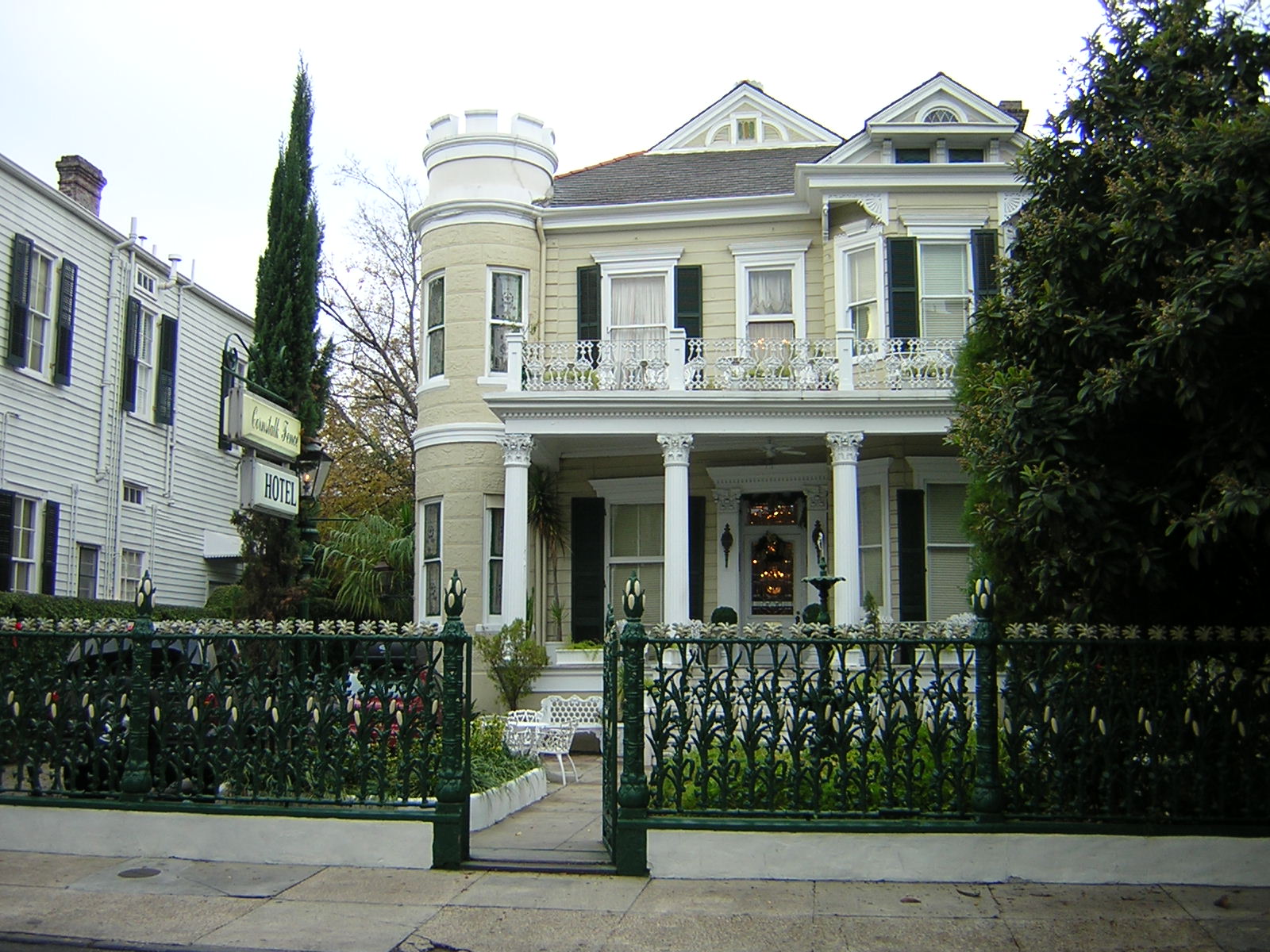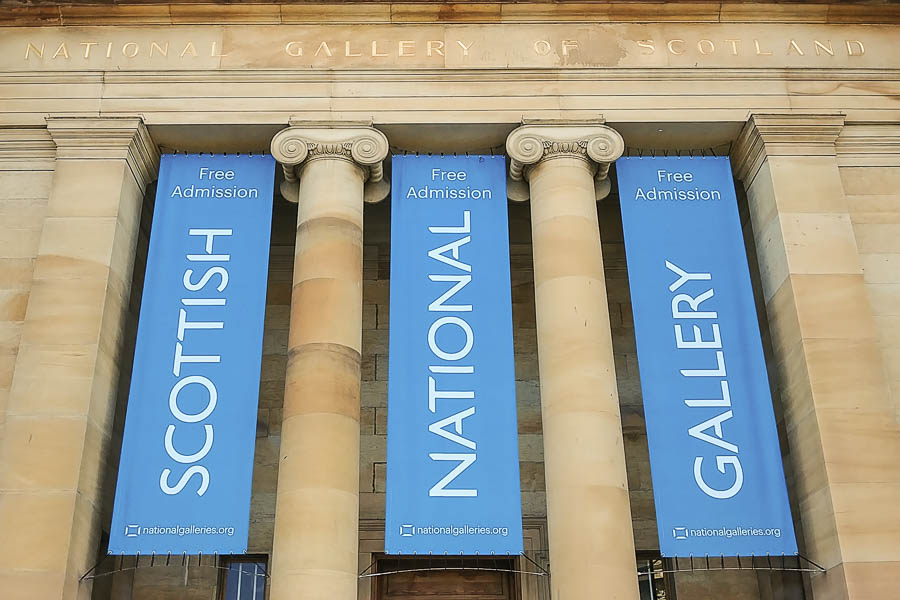Today is my birthday, which makes this year's Beloit College Mindset List even harder to read:
Students heading into their first year of college this year are mostly 18 and were born in 1999.
2. They are the last class to be born in the 1900s, the last of the Millennials -- enter next year, on cue, Generation Z!
11. The Panama Canal has always belonged to Panama and Macau has been part of China.
12. It is doubtful that they have ever used or heard the high-pitched whine of a dial-up modem.
16. They are the first generation to grow up with Watson outperforming Sherlock.
25. By the time they entered school, laptops were outselling desktops.
38. They have only seen a Checker Cab in a museum.
47. The BBC has always had a network in the U.S. where they speak American.
59. Bill Clinton has always been Hillary Clinton’s aging husband.
Ouch.
I'll just levee where I foundee.

Yesterday I posted a photo of the hotel I'm staying in. Apparently it caught my eye on my first trip to New Orleans, in December 2003:

Also, I didn't really take a lot of photos on the 2003 trip, presumably because the camera (a 1.8 Megapixel Nikon E2100) had limited storage.
I'm taking a couple of days to shadow some friends in New Orleans. It's a nice end to summer: while Chicago already feels like early autumn, here it'll get up to 32°C in a couple of hours.
My hotel is historic, and really cute:

Updates as events warrant. Brunch first.
A 1990s study by New York City showed that in-sink garbage disposals punch above their weight in environmental benefits. So why are they so rare in the city? Misconceptions, apparently:
The city installed more than 200 of the devices in select city apartments for a 21-month trial run; they then compared apartment units that had disposers with disposer-less units in the same building. Careful analyses from this study and others formed the basis of DEP’s report: the projected impact of citywide disposal legalization was minimal, and the Department estimated a $4 million savings in solid waste export costs.
Waste disposal is a thorny problem even in small towns, but for New York City, the trash pile continues to mount: The Department of Sanitation handles nearly 10,000 tons per day of waste generated by residents and nonprofit corporations, and the cost of disposal in Manhattan has grown from $300 million in 2005 to about $400 million today. Commercial establishments are serviced by private carting firms who also collect about 10,000 tons per day. All of that trash must be transported to landfills—often hundreds of miles outside the city—where it is converted into methane gas.
[L]andlords may still be reluctant to install the fixtures because of first-time installation costs (which can exceed $600), concerns about maintenance, or because they simply aren’t aware disposers are permitted to begin with. Perhaps the greatest block to in-sink disposal adoption, however, are our own misconceptions about them. Water and electricity use are minimal (according to InSinkerator, disposers account for less than 1 percent of a household’s daily water usage, and the total energy cost is about $0.50 per year); the devices don’t require much maintenance and often last a decade or more; clogged pipes are rare because scraps are entirely pulverized; almost everything can go down the disposer (veggies, fruit, meat, pizza), and newer models are nearly silent (and not deadly).
They also help your kitchen garbage smell better. But that's nothing compared to recapturing millions of tons of methane.
One week after Amazon's purchase of Whole Foods Market, what have we learned? Mainly that Amazon is great at marketing:

Amazon-owned Whole Foods wasted no time in reducing prices on certain food items across the store, including avocados, tomatoes, bananas, ground beef and eggs.
A few examples: At a Whole Foods in Evanston, a dozen white eggs went from $3.39 to $2.99; New York strip steak, from $18.99 a pound to $13.99; and organic bananas from 99 cents a pound to 69 cents.
But some analysts say the price cuts were mostly about creating buzz. Gordon Haskett Research Advisors, a New York-based market research firm, compared 114 items before and after the announced changes at a Whole Foods store in New Jersey and found an average price decline of only 1.2 percent, with 78 percent of the items unchanged from the previous week.
"As Amazon integrates Whole Foods' supply chain and distribution into its existing infrastructure, I think Prime members will become more willing to try Amazon's grocery platform, with the endgame being a higher Prime pricing tier. Still, I believe it will take some time before we can define the acquisition as a success," [said R.J. Hottovy, an analyst with Morningstar, a Chicago-based market research firm].
I went there Monday (see photo above), and saw some items marked down but otherwise not much changed. I'll be watching closely.
I promised to post photos from Scotland once I had a chance to go through all 800 or so from my 7D, and today, I had a (short) chance.
First: the Scottish National Gallery, Edinburgh, where we had breakfast on August 8th:

Second, Glenmachrie House, where we stayed:

(This is the reverse of the image I posted earlier, about an hour later, and with a real camera and HDR software.)
More tomorrow.
I first visited New York in July 1984, stopping by the Metropolitan Museum of Art on the 25th. I took a photograph of Georges de La Tour's "The Fortune Teller," painted sometime between 1620 and 1639:

Last month I visited again, on the 23rd—just two days shy of 33 years later:

Using Adobe Photoshop Lightroom, I have tried to get the photos to look as similar as possible. But my LG G6 phone and its 13 Megapixel camera just provides so much more data than the 4 Megapixel scan of the Kodachrome 64 slide, which itself has such constrained dynamic range, that the modern photo can't help but be clearer.
In fact, the narrow dynamic range of Kodachrome was one of its selling points. The trade-off was its deep, rich colors and detail—none of which a quick 4 MP scan can read.
If I have the opportunity, I'll re-scan the original slide and try again. For now, I leave the diptych above as a demonstration of how far photography has come since I was a kid.
For comparison, here's the reference image from the Met's website:

Via WGN-TV, the fourth-largest city in the U.S. has received more rain in the last week than Chicago receives in an average year.
Chicago's average annual precipitation is 910 mm. Since last Friday, Houston has gotten 1,070 mm. The wettest year in Houston history (1900) dumped 1,851 mm on it. So far this year, with 4 months left to go, Houston has gotten 1,798 mm. Of course, the odds are pretty good that the city will get another 53 mm of rain before December 31st.
We have no idea how bad the damage is yet. The entire Houston Chronicle website is about the flood. At least the rain has stopped for now—but officials worry about additional reservoir overflows and levee breaks.
We're just beginning to understand the magnitude of this disaster. And with key Federal posts, including FEMA Director, yet to be filled, President Trump is so out of his depth one can only hope that state and local governments can help.
Hurricane Harvey has dropped so much rain on Houston that two 1930s-era dams have been overwhelmed for the first time in history:
The U.S. Army Corps of Engineers confirmed Tuesday morning that water was spilling from around the dam gates of the Addicks Reservoir, which has been overwhelmed by extreme rainfall from Hurricane Harvey. Officials said they expect the Barker Reservoir, to the south of Addicks, to begin overflowing similarly at some point Tuesday.
A Harris County Flood Control District meteorologist said the overflow from the reservoirs would eventually flow into downtown Houston.
The reservoirs, which flank Interstate 10 on the west side of Houston, flow into the Buffalo Bayou and are surrounded by parks and residential areas. Water levels in the two reservoirs had already reached record levels Monday evening, measuring 32 m at Addicks and 30 m at Barker.
Engineers were unable to measure water levels at the Barker Reservoir on Tuesday because its gauge was flooded overnight, said Jeff Lindner, the Harris County flood control meteorologist.
In response, City Lab asks, why can't the U.S. manage flooding?
For New Orleans, whose below-sea-level position makes it particularly imperiled, the August floods were a reminder of something we should take much more seriously than we have. We ought to apply more aggressively the lessons we claimed to be learning from the Dutch after Katrina. It’s a course of action that would amount to a sea change in how we approach the wet threat that surrounds us on every side.
We need to get as smart and wily about water as Rotterdam. New Orleans’s continued viability as a population center and commercial hub depends on it. We must learn to live with water, to absorb rainfall and storm surge in massive retention facilities, to designate greenspaces that double as parks. We need to stop paving our yardsto make nifty little pads for the family car. We need to build absorbent rooftop gardens on as many buildings as can be put to that purpose.
Speaking of, I'm planning to visit New Orleans this weekend. Harvey is expected to pass northwest of the city tomorrow and land in the Tennessee Valley by Friday afternoon. I'm still bringing water shoes and an umbrella.